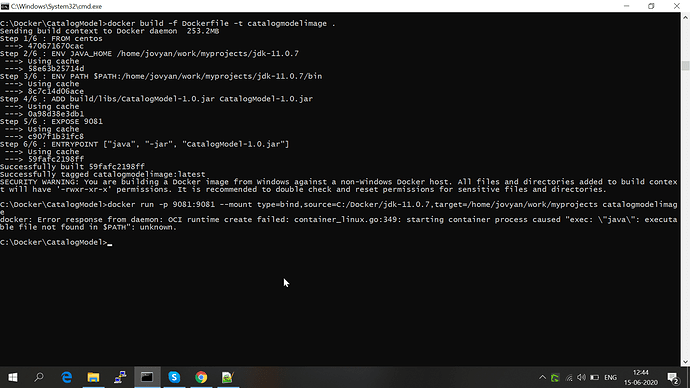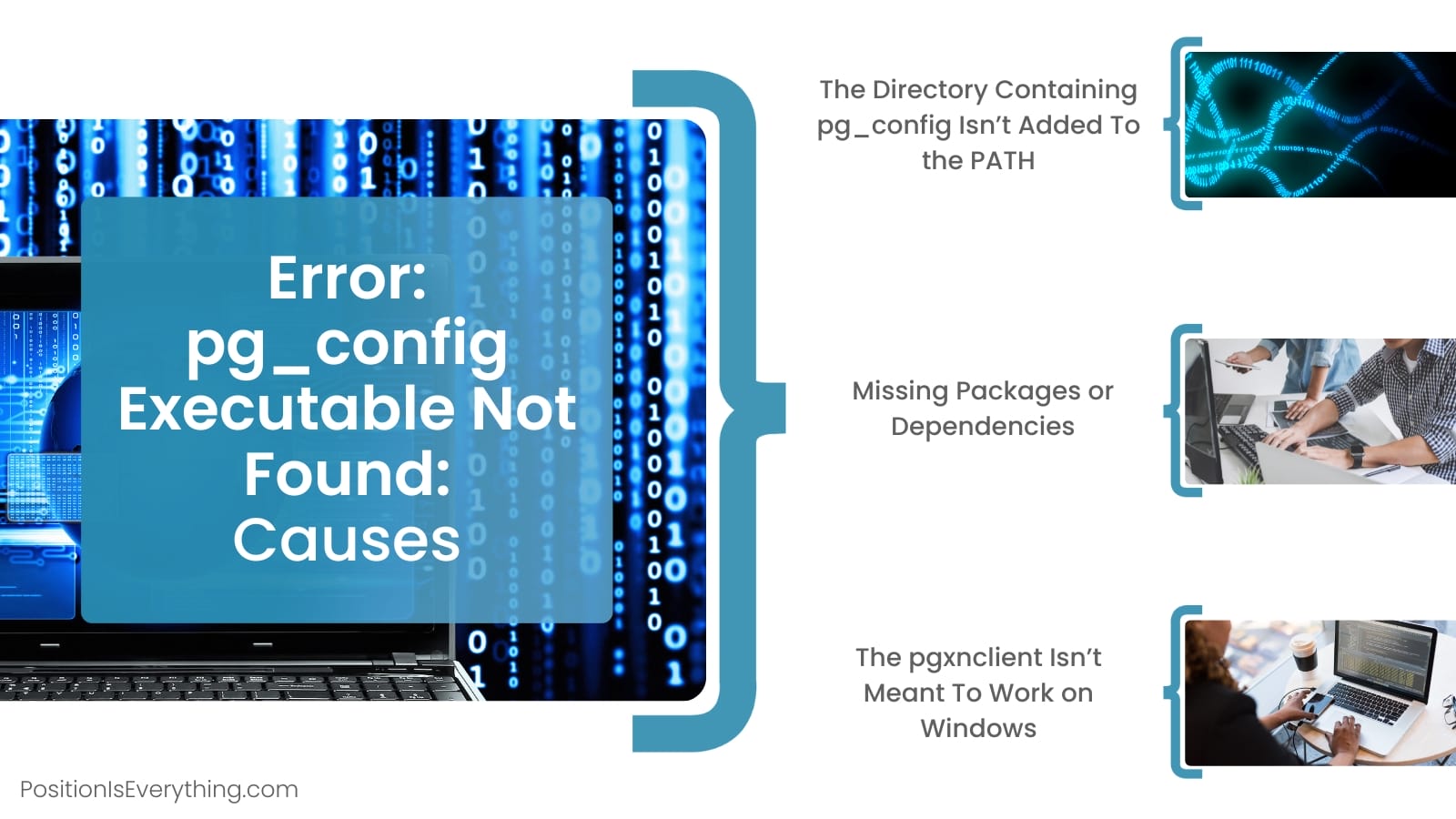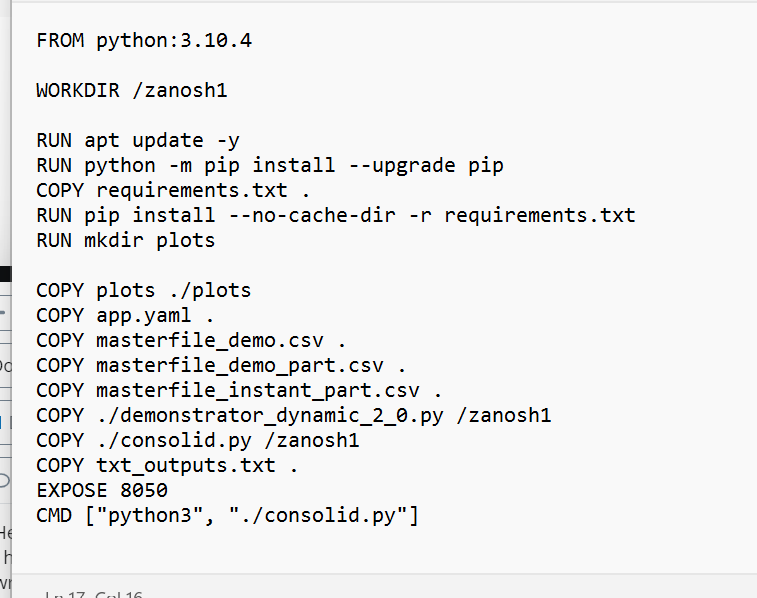Python Executable File Not Found In $Path
Python is a versatile and popular programming language used for various applications and development projects. However, encountering the error message “Exec: python: executable file not found in $PATH” can be frustrating for developers and users alike. This article will delve into the reasons behind this error and provide solutions to overcome it. We will also address frequently asked questions related to the topic.
Reasons for the Python Executable File Not Found in $PATH:
1. Incorrect Python installation:
One common reason for the error is an incorrect installation of Python. It may occur if Python is not installed at all or if it is installed in a different location than the one specified in the $PATH environment variable.
2. Missing or corrupted $PATH environment variable:
The $PATH environment variable is an essential part of the operating system’s configuration, providing a list of directories to search for executable files. If the $PATH variable is missing or corrupted, the system may not be able to find the Python executable file.
3. Python not added to $PATH:
During the installation process, Python usually adds itself to the $PATH variable automatically. However, if this step is skipped, the system will not be able to locate the Python executable file.
4. Changes in the $PATH not applied properly:
Modifying the $PATH variable requires restarting the system or sourcing the changes to apply them fully. If these steps are not performed, the error may occur.
5. Error in the Python installation directory:
If the Python installation directory contains errors or is inaccessible, the operating system will not be able to locate the Python executable file.
6. Multiple Python versions causing conflicts:
Having multiple versions of Python installed on a system can create conflicts, as the $PATH variable may reference an incorrect version. This can lead to the “executable file not found in $PATH” error.
7. Updates or upgrades affecting the $PATH configuration:
Updating or upgrading the operating system or Python itself can sometimes alter the $PATH configuration, resulting in the error. This often occurs when the updated version of Python is installed in a different location.
Solutions to the “Python Executable File Not Found in $PATH” Error:
1. Verify Python installation:
Ensure that Python is correctly installed on your system. You can do this by opening a terminal or command prompt and running the command “python –version”. If Python is not installed, download and install the latest version from the official Python website.
2. Check $PATH environment variable:
Confirm that the $PATH environment variable is correctly set. Open a terminal or command prompt and run the command “echo $PATH”. This will display the directories included in the $PATH variable. Make sure the directory containing the Python executable file is present. If it is missing or incorrect, proceed to the next steps.
3. Add Python to $PATH:
If Python is not added to the $PATH variable, you need to add it manually. Open a terminal or command prompt and locate the directory where Python is installed. Then use the command “export PATH=”$PATH:/path/to/python”” (replace “/path/to/python” with the actual path). This will append the Python directory to the $PATH variable.
4. Apply changes to $PATH:
After modifying the $PATH variable, you need to either restart your system or reload the changes to apply them fully. Restarting your computer is the simplest solution. However, if you prefer not to restart, you can use the command “source ~/.bashrc” (for Bash) or “source ~/.zshrc” (for Zsh) to reload the changes.
5. Reinstall Python:
If the issue persists, try reinstalling Python. Uninstall the existing Python installation and reinstall it from scratch, following the official instructions. This ensures a clean installation that is more likely to resolve any configuration errors.
6. Resolve multiple version conflicts:
If you have multiple versions of Python installed, it is essential to manage them properly. Consider using virtual environments, such as virtualenv or Conda, to isolate your Python projects and avoid conflicts. Additionally, ensure that the correct version of Python is added to the $PATH variable.
7. Update $PATH after upgrades:
If the error occurs after updating Python or the operating system, revisit the $PATH configuration. Verify that the correct directories are included and make any necessary adjustments.
FAQs:
1. Why am I getting the error “Exec: python: executable file not found in $PATH” on macOS?
This error typically occurs on macOS when Python is not added to the $PATH environment variable or if there are issues with the installation directory. Follow the solutions mentioned above to resolve the error.
2. I receive an error “Python command not found” when running Python on macOS with Bash. How can I fix it?
This error suggests that the system cannot locate the Python executable file. Check the $PATH variable and ensure that the Python installation directory is correctly added. If not, follow the steps outlined in the solutions section above.
3. How can I set the PYTHON environment variable on macOS to address the “Can’t find Python executable ‘python'” error?
To set the PYTHON environment variable on macOS, open a terminal and run the command “export PYTHON=/path/to/python” (replace “/path/to/python” with the actual path to the Python executable). This will set the PYTHON variable to the specified path.
4. I am getting a “Zsh: command not found: pyinstaller” error. How can I resolve it?
This error suggests that PyInstaller, a Python packaging tool, is not accessible via the command line. Ensure that PyInstaller is installed correctly and included in the $PATH variable. If not, reinstall PyInstaller and check your $PATH configuration.
5. Where can I find the installation path of Python to resolve the “Install path python executable file not found in $path” error?
The installation path of Python depends on your operating system and the method used for installation. On macOS, the default installation path is usually “/Library/Frameworks/Python.framework/Versions/
In conclusion, encountering the “Exec: python: executable file not found in $PATH” error can be caused by various issues, including incorrect Python installation, problems with the $PATH environment variable, and conflicts with multiple Python versions. By following the troubleshooting steps and solutions outlined in this article, you should be able to resolve the error and successfully run Python on your system.
Macos | Linux |Arduino Error : Python Executable Not Found In Path |Error Compiling For Board Esp32
Keywords searched by users: python executable file not found in $path Exec: python”: executable file not found in $PATH MacOS, Mac os exec python executable file not found in $path error compiling for board esp32 dev module, Bash python command not found macOS, Zsh: command not found: python, Configure line 3 exec python not found, Can t find Python executable python”, you can set the PYTHON env variable mac, Zsh command not found pyinstaller, Install path python
Categories: Top 98 Python Executable File Not Found In $Path
See more here: nhanvietluanvan.com
Exec: Python”: Executable File Not Found In $Path Macos
If you are a macOS user and have encountered the error message “Exec: python”: executable file not found in $PATH” while trying to execute a Python script, you’re not alone. This common issue can be frustrating, especially when you are eager to run your code smoothly. In this article, we will explore the reasons behind this error and provide you with comprehensive solutions to resolve it.
Understanding the Error:
When you receive the “Exec: python”: executable file not found in $PATH” error, it means that the Terminal is unable to locate the Python executable file in the system’s PATH environment variable. The PATH variable stores the locations where the operating system looks for executable files. Thus, if Python is not included in the PATH, the system fails to find and execute it, resulting in the error.
Causes of the Error:
1. Python not installed: The most common reason for this error is that Python is not installed on your macOS system. By default, macOS ships with Python 2.7 already installed; however, it does not come pre-installed with Python 3.x versions.
2. Python not in the PATH: Another reason for the error is that Python is not added to the system’s PATH environment variable. This is particularly common when you are using a virtual environment or a non-standard Python installation.
Solutions:
1. Install Python: If you encounter this error on a fresh macOS installation, you can resolve it by installing Python. Open your preferred web browser and search for “Python” to find the official Python website. On the website, navigate to the downloads page and select the appropriate installer for your macOS version. Follow the installation instructions provided by the Python installer, and once it’s complete, Python will be installed on your system.
2. Adding Python to PATH: To add Python to the system’s PATH variable, you can follow the steps below:
a. Open the Terminal application on your macOS system.
b. Type `nano ~/.bash_profile` and press Enter. This command will open the .bash_profile file in the nano text editor.
c. Add the following line at the end of the file:
“`
export PATH=”/usr/local/bin:$PATH”
“`
d. Press Ctrl + X to exit nano and save the changes.
e. Type `source ~/.bash_profile` and press Enter to refresh the Terminal and apply the changes.
Now, you should be able to execute Python scripts without encountering the “Exec: python” error.
3. Check Python Installation: If you have already installed Python, but still encounter the error, it’s possible that Python’s installation is corrupted or missing some components. In such cases, you can try reinstalling Python and check if the error persists.
4. Virtual Environments: If you are using a virtual environment created with tools like venv or Conda, it is recommended to activate the environment before executing the Python script. Activate the virtual environment by running the following command in the Terminal:
“`
source path/to/virtual-env/bin/activate
“`
Once the environment is activated, run your Python script again, and the error should be resolved.
5. Using the absolute path: If the previous solutions don’t help, you can try using the absolute path to the Python executable in the Terminal. To find the path, open the Terminal and type `which python`. It will return the path to the Python executable. You can then use this path to execute your Python scripts. For example:
“`
/usr/local/bin/python3 script.py
“`
Replace `/usr/local/bin/python3` with the output of `which python` in your case.
FAQs:
Q: Why does macOS not come with Python pre-installed in newer versions?
A: Apple decided to drop the pre-installation of Python with macOS to reduce the complexity and size of the operating system. It is now recommended to install Python manually using the official website.
Q: Can I have multiple versions of Python installed on my macOS system?
A: Yes, macOS supports having multiple versions of Python installed. You can switch between these versions using tools like pyenv or by specifying the version explicitly in your Terminal commands.
Q: Is it necessary to add Python to the PATH variable?
A: While not strictly necessary, adding Python to the PATH makes it easier to execute Python scripts from any directory without specifying the full path every time.
In conclusion, the “Exec: python”: executable file not found in $PATH” error can be resolved by installing Python and ensuring it is added to the system’s PATH variable. Additionally, considering virtual environments and using the absolute path to the Python executable can also help resolve this issue. By following the provided solutions and frequently asked questions, you should be able to overcome this error and enjoy smooth Python execution on your macOS system.
Mac Os Exec Python Executable File Not Found In $Path Error Compiling For Board Esp32 Dev Module
When working with the ESP32 Dev Module board, developers often use the Python programming language to compile and execute their code. However, Mac OS users may encounter the “exec: python executable file not found in $path” error during the compilation process. This error signifies that the system cannot find the Python executable file required to execute the code.
There can be several reasons for this error to occur. Let’s delve into some of the common causes:
1. Python not installed: The most apparent cause of this error is the absence of Python on your Mac OS. To check if Python is installed, open the Terminal and type “python -V” or “python3 -V” (depending on the version you are using). If Python is not installed, you will need to install it manually.
2. Python not added to $path: Even if Python is installed, the system may not recognize it if it is not added to the $path environment variable. $path is a list of directories that the system searches for when executing a command. If Python’s directory is not included in $path, the system won’t be able to locate the required executable file.
Now that we have identified the potential causes for the “exec: python executable file not found in $path” error, let’s explore some solutions to overcome it:
1. Install Python: If you found that Python is not installed on your Mac OS, you need to download and install it. Visit the official Python website (python.org) and download the appropriate version for your system. Follow the installation instructions provided, and once completed, verify the installation as mentioned earlier.
2. Add Python to $path: If Python is already installed, but not added to $path, you need to manually add it. Open the Terminal, and type “nano ~/.bash_profile” to open the bash profile file. Add the following line to the file:
export PATH=”/usr/local/bin:$PATH”
Save the changes and exit the text editor. Now, type “source ~/.bash_profile” in the Terminal to apply the modifications. Finally, verify if Python is properly added to $path.
These solutions should resolve the “exec: python executable file not found in $path” error, ensuring smooth compilation for the ESP32 Dev Module board on Mac OS. However, if you are still experiencing the issue, consider the following FAQs:
Q1. Which versions of Python are compatible with the ESP32 Dev Module?
A1. The ESP32 Dev Module is compatible with both Python 2 and Python 3. Ensure that you have the desired version of Python installed when working with the board.
Q2. I have followed the solutions provided, but the error persists. What can I do?
A2. If the error persists, try restarting your system and re-compiling your code. Sometimes, a simple system reboot can resolve various issues.
Q3. Can I use other programming languages instead of Python for the ESP32 Dev Module?
A3. Yes, the ESP32 Dev Module supports other programming languages like C and C++. You can explore different options based on your expertise and requirements.
In conclusion, the “exec: python executable file not found in $path” error while compiling for the ESP32 Dev Module on Mac OS can be resolved by installing Python and adding it to the $path environment variable. By following the solutions provided, you can overcome this error and continue your development seamlessly. Remember to verify your Python installation and adjust $path accordingly. Happy coding!
Images related to the topic python executable file not found in $path

Found 47 images related to python executable file not found in $path theme
![[ESP32 Arduino MacOS] Solved [Esp32 Arduino Macos] Solved](https://i.ytimg.com/vi/GMPZF8Z-wR0/maxresdefault.jpg)



![AWS Batch] CannotStartContainerError: executable file not found in $PATH で AWS Batch が動かない時の対策 - Qiita Aws Batch] Cannotstartcontainererror: Executable File Not Found In $Path で Aws Batch が動かない時の対策 - Qiita](https://qiita-user-contents.imgix.net/https%3A%2F%2Fcdn.qiita.com%2Fassets%2Fpublic%2Farticle-ogp-background-9f5428127621718a910c8b63951390ad.png?ixlib=rb-4.0.0&w=1200&mark64=aHR0cHM6Ly9xaWl0YS11c2VyLWNvbnRlbnRzLmltZ2l4Lm5ldC9-dGV4dD9peGxpYj1yYi00LjAuMCZ3PTkxNiZ0eHQ9JTVCQVdTJTIwQmF0Y2glNUQlMjBDYW5ub3RTdGFydENvbnRhaW5lckVycm9yJTNBJTIwZXhlY3V0YWJsZSUyMGZpbGUlMjBub3QlMjBmb3VuZCUyMGluJTIwJTI0UEFUSCUyMCVFMyU4MSVBNyUyMEFXUyUyMEJhdGNoJTIwJUUzJTgxJThDJUU1JThCJTk1JUUzJTgxJThCJUUzJTgxJUFBJUUzJTgxJTg0JUU2JTk5JTgyJUUzJTgxJUFFJUU1JUFGJUJFJUU3JUFEJTk2JnR4dC1jb2xvcj0lMjMyMTIxMjEmdHh0LWZvbnQ9SGlyYWdpbm8lMjBTYW5zJTIwVzYmdHh0LXNpemU9NTYmdHh0LWNsaXA9ZWxsaXBzaXMmdHh0LWFsaWduPWxlZnQlMkN0b3Amcz0zNDc4NWViYmZlN2MwYWFiMTdmNjBjNmM5ZTM5ZGQ5NQ&mark-x=142&mark-y=112&blend64=aHR0cHM6Ly9xaWl0YS11c2VyLWNvbnRlbnRzLmltZ2l4Lm5ldC9-dGV4dD9peGxpYj1yYi00LjAuMCZ3PTYxNiZ0eHQ9JTQwc2lydWt1NiZ0eHQtY29sb3I9JTIzMjEyMTIxJnR4dC1mb250PUhpcmFnaW5vJTIwU2FucyUyMFc2JnR4dC1zaXplPTM2JnR4dC1hbGlnbj1sZWZ0JTJDdG9wJnM9MTNiYjFmYmUzZjVkNmYwYTc1ZDU2YTZhOGM1NDlkODQ&blend-x=142&blend-y=491&blend-mode=normal&s=977c054d5a3e3dd09c6c65e24695d20b)













Article link: python executable file not found in $path.
Learn more about the topic python executable file not found in $path.
- Troubleshooting — Arduino-ESP32 2.0.6 documentation
- Exec: “python”: executable file not found in $PATH – IDE 1.x
- “exec: “python”: executable file not found in $PATH
- ESP32 Arduino macOS exec: “python”: executable file not …
- Why do I receive “python: executable file not found in $PATH …
- “python”: executable file not found in $PATH – DFRobot
- “python”: executable file not found in $PATH Error compiling …
- Ubuntu: exec: “python”: executable file not found in $PATH
See more: nhanvietluanvan.com/luat-hoc